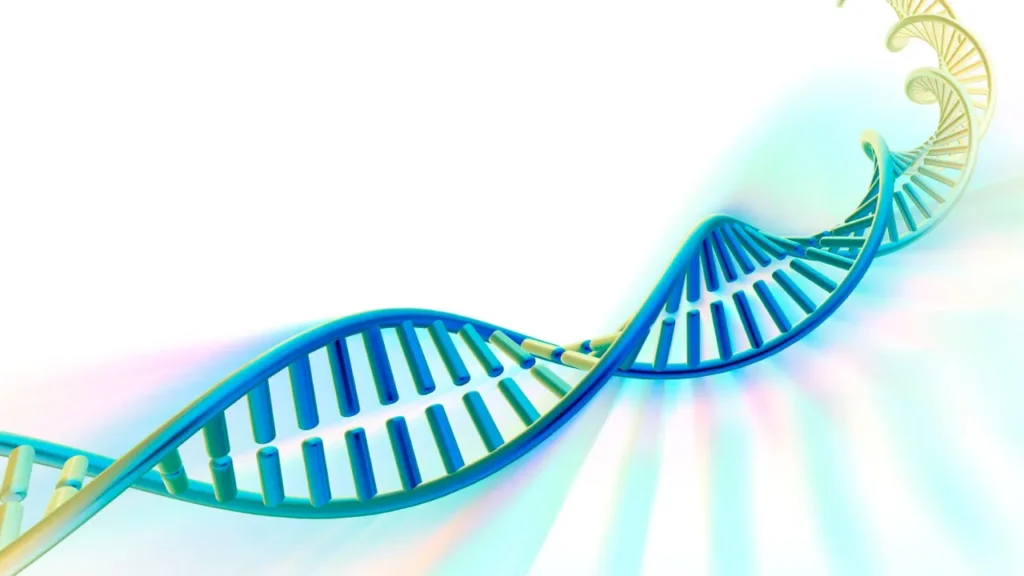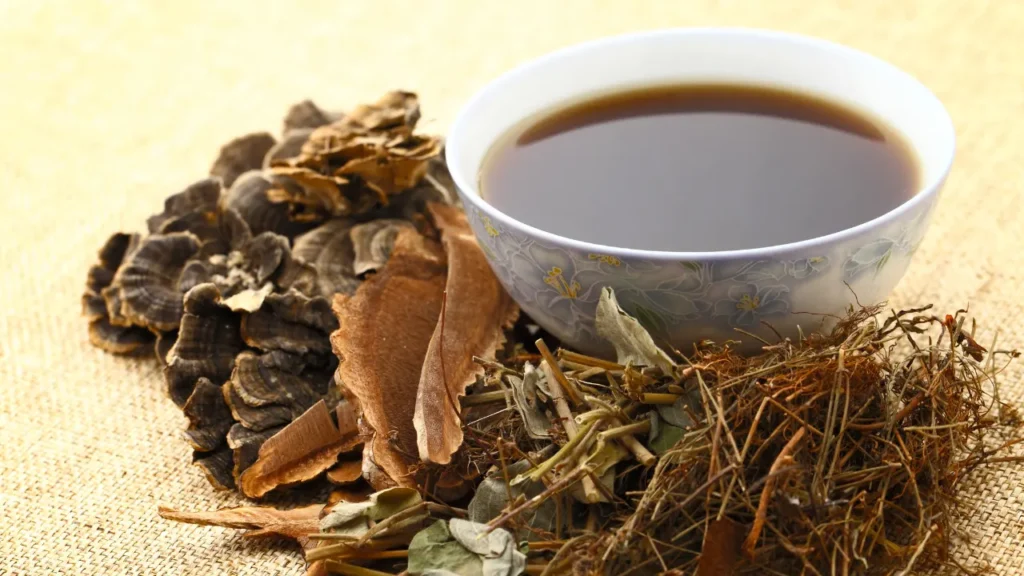Scutellaria baicalensis, a perennial herb that is a member of the Lamiaceae family of mints, is a native of East Asia, specifically China, Korea, Mongolia, and Russia. Due to its many health advantages, it has been utilized for millennia in traditional Chinese medicine. The plant’s roots, also known as Radix Scutellariae or Huang Qin, are frequently employed in many different therapeutic compositions. The chemical composition of the Baikal skullcap, its physiological methods of action, and its potential applications in contemporary medicine have all been the subject of recent scientific study.
You May Also Like:
Battle of the Brain Boosters: Brain MD Omega 3 Power vs. Kori Krill Oil Mind & Body
Blessed Thistle: Benefits, Dosage, Side Effects, Drug Interactions, And Other Important Information
BAIKAL SKULLCAP: Benefits, Dosage, Side Effects, Drug Interactions, And Other Important Information is an original (NootropicsPlanet) article.
Nature of Baikal Skullcap
Scutellaria baicalensis, sometimes known as the “Baikal skullcap,” is a perennial herb that grows well in a variety of habitats, especially in parts of East Asia. Its distinctive growth pattern and form, which contribute to its unique chemical composition and various health advantages, define it.
Motifs and Habitat
The Lamiaceae family is represented by the branching, upright stem of the Baikal skullcap, which generally grows to a height of 30 to 60 cm. The plant produces opposite, lanceolate leaves with a short petiole and simple, serrated leaves. In racemes or spike-like clusters, the tubular, two-lipped blooms, which have a vivid blue to purple color, emerge from the leaf axils. The fruit is a dehiscent capsule that is tiny, dry, and contains four seeds.
Baikal skullcaps can be found in a variety of environments, including sunny meadows, grassy slopes, and woodland borders. It is suited to a variety of environmental conditions. It favors loamy or sandy soils with good drainage and can grow in various pH conditions, from acidic to slightly alkaline.
Extraction and Chemical Composition
Most of the plant’s bioactive substances are found in the roots of the Baikal skullcap, often referred to as Huang Qin or Radix Scutellariae. Flavonoids are a varied collection of secondary plant metabolites with many biological actions, making up most of these substances. Baicalin, baicalein, wogonin, and wogonoside are the main flavonoids found in Baikal skullcap roots, giving the plant its medicinal benefits.
Organic solvents like ethanol or methanol are commonly used to dissolve the flavonoids from the plant material and extract the bioactive components from the Baikal skullcap. After extraction, the solvent is eliminated using purifying methods such as evaporation to provide a concentrated extract full of bioactive flavonoids.
In conclusion, the Baikal skullcap’s distinctive form, ecological preferences, and chemical makeup contribute to its wide range of health advantages and therapeutic potential. By comprehending its nature, researchers and medical practitioners can better recognize this plant’s usefulness in conventional and modern medicine and plan for sustainable use and protection.
Health Benefits of Baikal Skullcap
Anti-inflammatory and antioxidant effects
Baicalin and baicalein have potent anti-inflammatory and antioxidant properties essential for preventing and treating many disorders. Their capacity to scavenge free radicals and reactive oxygen species— linked to cellular damage, aging, and several disease conditions—is what is thought to be responsible for their antioxidant effects. These substances also control the expression and activity of oxidative stress-related enzymes such as glutathione peroxidase, catalase, and superoxide dismutase.
An essential part of the immune response is inflammation, but persistent inflammation can result in a number of disorders. Inflammatory pathways like the nuclear factor kappa B (NF-B) pathway and the mitogen-activated protein kinase (MAPK) pathway have been demonstrated to be modulated by baicalin and baicalein. Additionally, they enhance the production of anti-inflammatory cytokines like interleukin-10 (IL-10) while decreasing the production of pro-inflammatory cytokines like interleukin-6 (IL-6) and tumor necrosis factor-alpha (TNF-).
Actions that protect neurons
The Baikal skullcap has shown favorable neuroprotective properties in several experimental models of neurological diseases. By lowering the generation of reactive oxygen species and regulating the activity of antioxidant enzymes, baicalin and baicalein may protect neurons from oxidative stress-related damage. These substances can also prevent the activation of microglia, the brain’s primary immune cells, which are involved in neuroinflammation and consequent neuronal injury.
In addition, Baikal skullcap may help treat neurodegenerative conditions like Alzheimer’s and Parkinson’s disease by reducing the formation of amyloid-beta and -synuclein protein clumps and encouraging their removal.
Antiviral behavior
Several viruses, including the hepatitis C virus, the influenza A virus, and the human immunodeficiency virus (HIV), have been shown to be resistant to the antiviral effects of the Baikal skullcap. Baicalin and baicalein’s antiviral mechanisms include preventing viral entrance, replication, and assembly. These substances, for instance, have been demonstrated to obstruct viral particle binding to host cell receptors, obstructing virus entry and subsequent infection. Additionally, they have the ability to block viral enzymes required for replication and reduce viral gene expression, thus decreasing the number of new viral particles produced.

Chemistry of Baikal Skullcap
Flavonoids, a broad class of secondary plant metabolites, are the primary physiologically active components of the Baikal skullcap. These compounds exhibit a wide range of biological effects, including antioxidant, anti-inflammatory, and antibacterial properties. In Baikal skullcap roots, the four significant flavonoids are baicalin, baicalein, wogonin, and wogonoside. The greatest research has been done on baicalin and baicalein, which are the most pharmacologically active.
Baicalin (5,6,7-trihydroxyflavone-7-glucuronide) is a glucuronide derivative of baicalein (5,6,7-trihydroxyflavone). Baicalin is converted into baicalein by the action of the enzyme -glucuronidase, produced by the intestinal microflora. Baicalin and baicalein both demonstrate a variety of pharmacological effects, including antiviral, anti-inflammatory, and antioxidant qualities.
Physiological Mechanisms of Action
The physiological mechanisms of action are the interaction of the Baikal skullcap and its bioactive components, particularly baicalin and baicalein, with diverse cellular and molecular targets and their modulation of important signaling pathways and biological functions. Among the principal mechanisms are:
- Modulation of oxidative stress: The flavonoids found in Baikal skullcap, in particular baicalin and baicalein, have strong antioxidant properties. They scavenge free radicals and reactive oxygen species (ROS), which contribute to oxidative stress and cellular damage. Additionally, these substances control the development and activity of antioxidant enzymes like glutathione peroxidase (GPx), catalase, and superoxide dismutase (SOD), which are essential for preserving cellular redox equilibrium.
- Control of inflammatory pathways: Flavonoids from Baikal skullcap have anti-inflammatory characteristics crucial for the prevention and treatment of various inflammatory illnesses. By preventing NF-B from activating and by reducing the expression of its target genes, such as inducible nitric oxide synthase (iNOS) and cyclooxygenase-2 (COX-2), they control the nuclear factor kappa B (NF-B) signaling pathway, a crucial regulator of inflammation. They also inhibit the mitogen-activated protein kinase (MAPK) pathway, which is also essential for the inflammatory response.
- Pro-inflammatory cytokine production is inhibited by chemicals found in the Baikal skullcap, particularly baicalin, and baicalein. Cytokines are tiny proteins that play a role in immunological control and cell signaling. They encourage the production of anti-inflammatory cytokines like interleukin-10 (IL-10) while inhibiting the release of pro-inflammatory cytokines like interleukin-6 (IL-6), tumor necrosis factor-alpha (TNF-), and interleukin-1beta (IL-1).
- Neuroprotection: Baikal skullcap’s antioxidant and anti-inflammatory properties are responsible for its neuroprotective effects. Baicalin and baicalein shield neurons from harm and encourage neuronal survival by lowering oxidative stress and neuroinflammation. These substances can also prevent the activation of microglia, the brain’s primary immune cells, which causes neuroinflammation and consequent neuronal damage.
- Reduction in protein aggregation: It has been discovered that the flavonoids in Baikal skullcap prevent the aggregation of specific proteins linked to neurodegenerative disorders, including amyloid-beta in Alzheimer’s disease and -synuclein in Parkinson’s disease. Various substances may be helpful in the treatment of various illnesses by avoiding the creation of harmful protein aggregates and encouraging their removal.
- Antiviral activity: The flavonoids in Baikal skullcap, particularly baicalin, and baicalein, have antiviral effects on several viruses. Through several methods, they prevent viral entrance, replication, and assembly. Inhibiting viral enzymes required for replication, suppressing the expression of viral genes, and interfering with the binding of viral particles to host cell receptors are a few examples of how they can reduce the generation of new viral particles.
In conclusion, the Baikal skullcap and its bioactive components’ physiological mechanisms of action are complex and include the control of oxidative stress, inflammation, neuroprotection, protein aggregation, and antiviral activity. These characteristics contribute to this dietary supplement’s wide range of health advantages, necessitating additional research into its possible medicinal uses.

Optimal Dosage of Baikal Skullcap
Due to the wide range of medicinal uses and the heterogeneity in individual responses, it is difficult to determine the ideal dosage of Baikal skullcap or its bioactive components. Depending on the ailment being treated, Baikal skullcap extracts typically range from 300 to 2,400 mg daily. Before beginning any supplements, though, you should speak with a healthcare provider, as they may make personalized recommendations based on your needs, medical history, and drug interactions.
Side Effects of Baikal Skullcap
The Baikal skullcap is typically considered safe when used sensibly and under a doctor’s supervision. Drowsiness, hypotension (low blood pressure), and gastrointestinal problems like nausea, diarrhea, and stomach cramps are among the side effects that have been noted. Usually minor and temporary, these side effects disappear when the supplement is stopped or the dosage changes.

Potential Substance Interactions with Baikal Skullcap
Certain drugs and substances may interact with the Baikal skullcap, changing their effects or raising the possibility of adverse side effects. Known interactions include the following.
- Substrates for cytochrome P450 enzymes: Baicalin and baicalein have the ability to inhibit cytochrome P450 enzymes, in particular CYP3A4 and CYP2C9, which are in charge of metabolizing a variety of medications. This interaction may raise the body’s concentrations of certain drugs, enhancing their effectiveness or increasing their risk of adverse side effects.
- Anticoagulants and antiplatelet medications: The effects of anticoagulants (such as warfarin) and antiplatelet drugs (such as aspirin) may be amplified by Baikal skullcap, raising the risk of bleeding.
- Antihypertensive medications: Due to the potential hypotensive effects of Baikal skullcap, antihypertensive medications may be more effective, increasing the risk of hypotension.
- Drugs that depress the central nervous system: Baikal skullcap may have sedative effects and can enhance the effects of drugs that depress the central nervous system (such as benzodiazepines and opioids), which increases the risk of over-sedation or respiratory depression.
Responsible Use of Baikal Skullcap
It is critical to abide by the following rules when using Baikal skullcap as a dietary supplement:
- Before beginning any supplements, speak with a healthcare provider, especially if you have current medical issues or are using prescription drugs.
- Select premium dietary supplements from renowned producers who follow good manufacturing procedures (GMP) and have undergone independent purity and potency testing.
- Comply with the manufacturer’s or your healthcare provider’s advised dose regimen, and watch for any possible interactions or adverse effects.
- The danger of interactions may arise while using Baikal skullcap in combination with other dietary supplements or drugs.
BAIKAL SKULLCAP:
Conclusion
Baikal skullcap is an herb with a long history of use in traditional Chinese medicine. It has gained attention in modern times for its potential health benefits, including anti-inflammatory, antioxidant, neuroprotective, hepatoprotective, antimicrobial, antiviral, and possibly anticancer properties. While preclinical studies and traditional use provide encouraging results, further research, particularly well-designed clinical trials, is necessary to fully understand its efficacy, safety profile, and optimal therapeutic applications in humans. Extensive studies have not been conducted on the long-term safety of the Baikal skullcap or its potential interactions with medications. It’s essential to use Baikal skullcap supplements under the guidance of a healthcare professional, especially if you have underlying health conditions or are taking medications.

References:
- Baikal Skullcap: A Treasure Trove of Flavonoids with Therapeutic Potential. Retrieved from: https://www.frontiersin.org/articles/10.3389/fphar.2018.00894/full
- Neuroprotective effects of Scutellaria baicalensis extract and its main flavonoid, baicalein, against glutamate-induced neurotoxicity in PC12 cells. Retrieved from: https://pubmed.ncbi.nlm.nih.gov/22433514/
- Baicalin, a metabolite of baicalein with antiviral activity against dengue virus. Retrieved from: https://www.nature.com/articles/s41598-017-03812-8
Important Note: The information contained in this article is for general informational purposes only, and should not be construed as health or medical advice, nor is it intended to diagnose, prevent, treat, or cure any disease or health condition. Before embarking on any diet, fitness regimen, or program of nutritional supplementation, it is advisable to consult your healthcare professional in order to determine its safety and probable efficacy in terms of your individual state of health.
Regarding Nutritional Supplements Or Other Non-Prescription Health Products: If any nutritional supplements or other non-prescription health products are mentioned in the foregoing article, any claims or statements made about them have not been evaluated by the U.S. Food and Drug Administration, and such nutritional supplements or other health products are not intended to diagnose, treat, cure, or prevent any disease.


